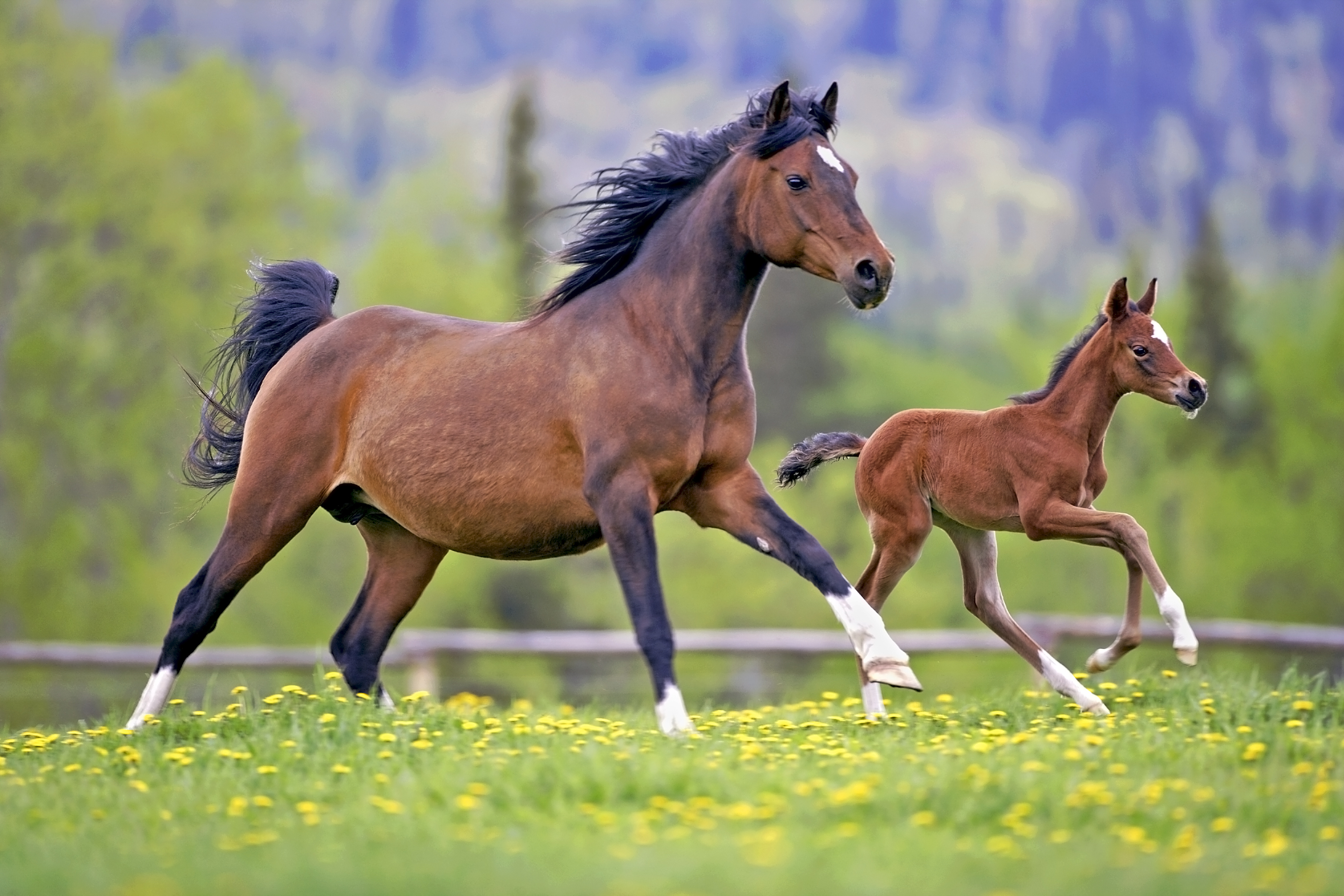Is herd rank inherited?
- August 3, 2023
- ⎯ Equus
A foal inherits many attributes from his dam, but high social rank does not appear to be one of them, according to a study from the Czech Republic.

Over two foaling seasons at the National Stud Farm, Kladruby nad Labem, researchers observed 59 native Kladruby broodmares, who lived in several small, stable herds numbering from eight to 14 horses. Interactions were recorded in the mare-foal groups, and the researchers documented the hierarchy of each herd, identifying the most dominant members.
During the observation period, 79 foals were born to the study mares. The youngsters were weaned when they were 4 to 7 months old, then moved to herds at another facility. When the offspring turned 3, the researchers returned to analyze the hierarchies of the different herds and determine which members were most dominant.
At the outset of the study, researchers had hypothesized that the dominant mares would produce more dominant offspring. The data, however, showed this wasn’t the case. “We found no influence of maternal rank on foal dominance behavior,” says Martina Komárková, PhD, “although we expected to from the beginning.”
Instead, explains Komárková, a youngster’s age—and, by default, the time spent in the new herd—seemed to be the most significant factor in determining his rank. Those offspring born earliest in the year and having been in the group the longest tended to be the most dominant, regardless of their dam’s social standing.
Komárková notes that mature horses often fall in herd rankings as they get older, but age appears to be an advantage for a young horse looking to establish his place in a group. “There may be several months between horses born in the same year, which lead to weight and height disproportion as well as ‘fighting’ skills developed through play,” she says.
It’s possible, Komárková says, that the relatively early weaning dates used in the study didn’t allow foals enough time to learn dominant behavior from their dams, but the complexity of herd dynamics makes it hard to identify the most influential factors. “Being dominant is a complex task, depending not only on age but also on aggression, experience, weight, skillfulness and, of course, the structure and characteristics of the herd.” What is clear, however, is that maternal rank alone doesn’t determine a foal’s place in his own herd later on.
Reference: “Age and group residence but not maternal dominance affect dominance rank in young domestic horses,” Journal of Animal Science, November 2014
This article first appeared in EQUUS issue #449
Don’t miss out! With the free weekly EQUUS newsletter, you’ll get the latest horse health information delivered right to your in basket! If you’re not already receiving the EQUUS newsletter, click here to sign up. It’s *free*!





